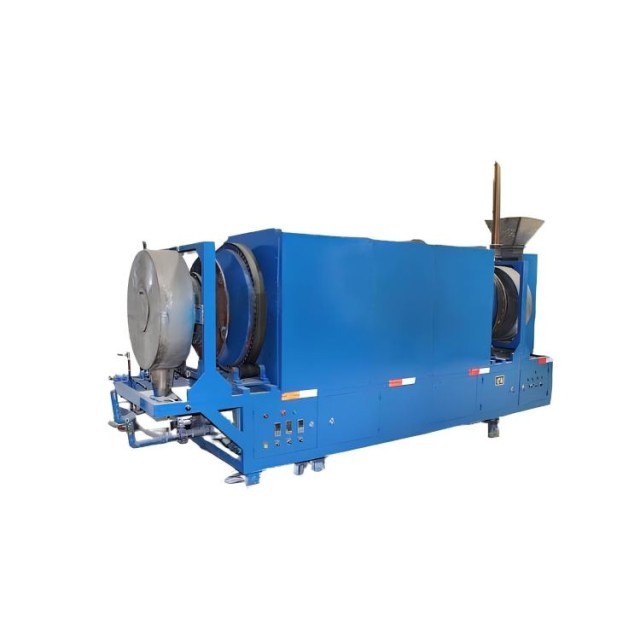
Electric Rotary Kiln
Electric Rotary Kiln Continuous Working Small Rotary Furnace Kiln for Pyrolysis Plant Heating
Item Number : KT-RFTF
Price varies based on specs and customizations
- Max. Temperature
- 950℃
- Furnace size (Tube Dia. × Heated Length)
- Φ200×2000mm~Φ1200×11000mm
- Power
- 30kw~648kw
Shipping:
Contact us to get shipping details Enjoy On-time Dispatch Guarantee.
Why Choose Us
Reliable PartnerEasy ordering process, quality products, and dedicated support for your business success.
Product Showcase: Electric Rotary Furnaces
Explore the robust design and versatile applications of KINTEK's Electric Rotary Furnaces, engineered for precision, durability, and efficiency.
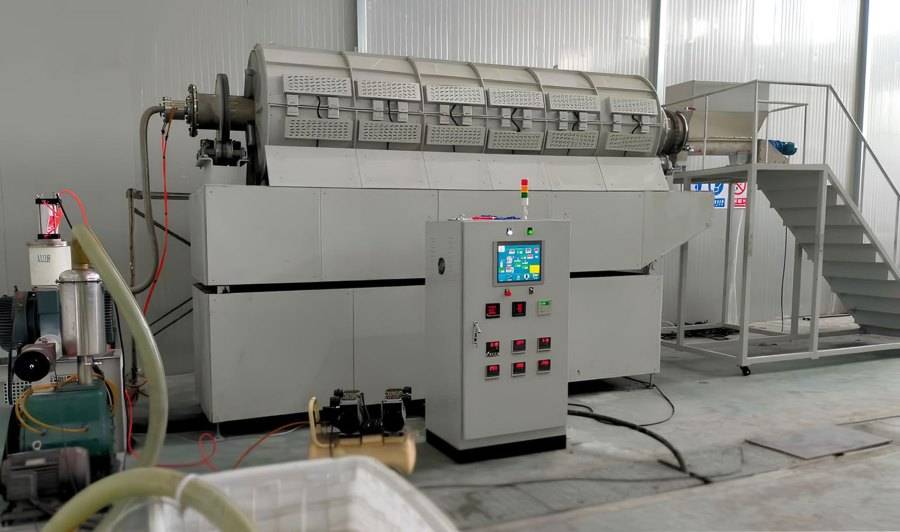
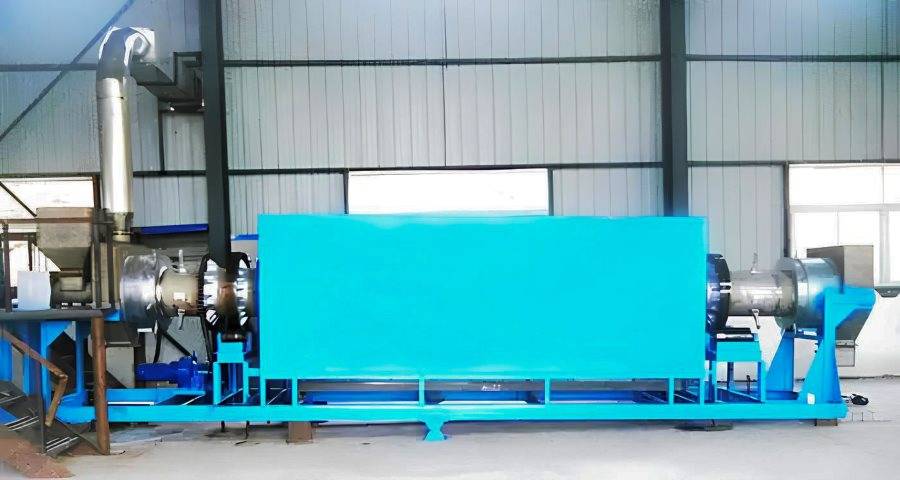

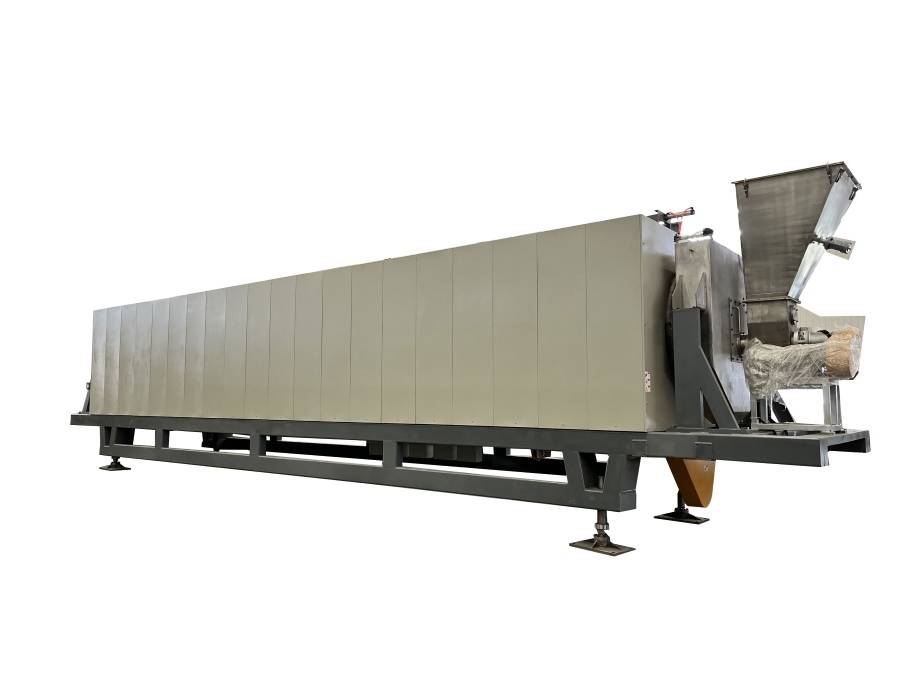


Advanced Electric Rotary Furnaces by KINTEK
Leveraging exceptional R&D and in-house manufacturing, KINTEK delivers advanced high-temperature solutions, including our specialized Electric Rotary Furnaces. These industrial furnaces utilize electricity as the heat source and are expertly designed for processes like calcination, drying, and pyrolysis of various materials. Characterized by high heating speeds, energy efficiency, and outstanding durability, our rotary furnaces are built to perform.
At the core of our design is a robust nickel-based alloy furnace tube, capable of withstanding continuous working temperatures up to 1100℃, ensuring longevity and reliability. Paired with high-quality Silicon Carbide (SiC) heating elements, these furnaces offer extended service life and simplified maintenance. KINTEK's commitment to deep customization ensures that each furnace can be precisely tailored to meet your unique experimental or production requirements.
Key Features & Benefits: Why Choose KINTEK Rotary Furnaces?
- Precision Temperature Control & Uniformity: Operates within a wide temperature range (200℃ to 1100℃) with high-accuracy PID intelligent thermal controllers. Multi-independent heating zones can be designed to meet specific production requirements, ensuring uniform heating.
- Durability & High-Temperature Performance: Features a rotary tube fabricated from nickel-based alloys, supporting continuous operation at up to 1100℃. Superior quality Silicon Carbide (SiC) heating elements ensure a durable service life and easy maintenance.
- Enhanced Efficiency & Productivity: Achieves high-speed electric heating, reducing downtime. Lightweight insulation minimizes heat loss. Continuous operation capability allows for simultaneous feeding, processing, and discharging, maximizing throughput and improving safety.
- Controlled Processing Environment: Equipped with an excellent dynamic rotary vacuum sealing system, enabling operation in controlled inert gas environments to prevent material oxidation and ensure consistent product quality.
- User-Centric Design & Operation: An intuitive touch screen controller provides intelligent thermal control, alarm functions, and data analysis capabilities. The modular design facilitates straightforward transportation, installation, and component replacement.
- Optimized Material Handling: Offers an automatic continuous feeding device for even material distribution. The indirect heating tube chamber, featuring a variable speed rotary drum and hydraulic tilting function, provides premium heating uniformity and allows for easy material movement control and discharge.
- Deep Customization & Versatility: Compact full system setups are ideal for research labs, small-batch production, or pilot projects. KINTEK offers extensive customization, including different drum diameters and lengths based on material handling capacity, and optional features like pre-heating, assisting heating for gas collection, cold traps, and condenser devices for liquid collection.
Versatile Applications
KINTEK Electric Rotary Furnaces are versatile and widely used across various industrial applications, including:
- Calcination and drying of diverse materials: Including iron phosphate, lithium iron phosphate, lithium manganate, graphite cathode, cobalt trioxide, silicon carbon cathode, lithium hydroxide, carbon removal by powder, zinc oxide, iron oxide, manganese oxide, rare earth materials, and nonferrous metals.
- Pyrolysis processes: Suitable for biomass, waste plastics, and other organic materials for the production of biochar, syngas, and other valuable products.
Operating Principle
Our continuous working electric heating rotary furnaces utilize high-temperature electric heating elements to generate heat. This heat is efficiently transferred to the materials being processed through a combination of radiation, conduction, and convection. This method allows for precise temperature control and uniform heating throughout the materials, ensuring efficient and consistent processing. The continuous operation feature enables uninterrupted processing, maximizing productivity and energy efficiency.
Electric Heating Rotary Furnace Specifications
| Model | Furnace size (Tube Dia. × Heated Length) | Max. Temperature | Heat zones | Power |
|---|---|---|---|---|
| KT-RFTF2020 | Φ200×2000mm | 950℃ | 3 | 30kw |
| KT-RFTF3030 | Φ300×3000mm | 950℃ | 6 | 54kw |
| KT-RFTF4050 | Φ400×5000mm | 950℃ | 6 | 96kw |
| KT-RFTF5060 | Φ500×6000mm | 950℃ | 6 | 168kw |
| KT-RFTF6080 | Φ600×8000mm | 950℃ | 9 | 234kw |
| KT-RFTF8090 | Φ800×9000mm | 950℃ | 9 | 342kw |
| KT-RFTF1211 | Φ1200×11000mm | 950℃ | 9 | 648kw |
Note: Other sizes and working temperatures for the furnace can be customized to meet your specific requirements.
Partner with KINTEK for Your Custom Furnace Solution
At KINTEK, we understand that every laboratory and production facility has unique needs. Our exceptional R&D capabilities and in-house manufacturing allow us to offer strong deep customization for all our high-temperature furnace solutions, including Muffle, Tube, Rotary Furnaces, Vacuum & Atmosphere Furnaces, and CVD/PECVD/MPCVD Systems.
Ready to find the perfect electric rotary furnace for your application? Let our experts help you design a solution tailored to your precise experimental or production requirements. Contact us today to discuss your project and receive a personalized quotation.
Click here to fill out our contact form and get started!
FAQ
What Are The Main Applications Of Electric Rotary Kilns?
What Is A Rotating Furnace Used For?
What Is The Principle Of A Rotary Furnace?
What Are The Main Applications Of Continuous Furnaces?
What Are The Main Applications Of A Rotary Tube Furnace?
What Are The Key Features Of Electric Rotary Kilns?
What Are The Main Types Of Rotating Furnaces Available?
What Are The Advantages Of Using A Rotary Furnace?
What Are The Key Features Of Continuous Furnaces?
What Are The Key Features Of A Rotary Tube Furnace?
How Does An Electric Rotary Kiln Work?
How Does A Rotating Furnace Work?
What Are The Key Features Of A Rotary Furnace?
What Should Be Considered When Choosing A Continuous Furnace?
How Does A Rotary Tube Furnace Work?
What Are The Advantages Of Using An Electric Rotary Kiln?
What Are The Advantages Of Using A Rotating Furnace?
What Are The Common Applications Of A Rotary Furnace?
What Are The Advantages Of Using A Continuous Furnace?
What Are The Advantages Of Using A Rotary Tube Furnace?
What Industries Benefit From Electric Rotary Kilns?
What Safety Features Are Included In Rotating Furnaces?
How Does A Rotary Furnace Handle Different Materials?
Can Continuous Furnaces Be Customized For Specific Industrial Needs?
What Temperature Can A Rotary Tube Furnace Reach?
What Temperature Range Can Electric Rotary Kilns Achieve?
Can Rotating Furnaces Be Customized For Specific Applications?
What Types Of Materials Can Be Processed In A Rotary Tube Furnace?
How Does The Design Of An Electric Rotary Kiln Ensure Efficient Processing?
What Makes Electric Rotary Kilns More Energy-efficient Than Traditional Combustion Methods?
Can Electric Rotary Kilns Be Customized For Specific Applications?
How Do Electric Rotary Kilns Contribute To Environmental Sustainability?
4.8
out of
5
Incredibly efficient and easy to operate. Perfect for our pyrolysis needs!
4.7
out of
5
Fast delivery and excellent build quality. Worth every penny!
4.9
out of
5
This kiln is a game-changer! Super durable and advanced tech.
4.8
out of
5
Highly reliable and energy-efficient. Great value for money!
4.7
out of
5
Impressive performance and compact design. Perfect for small plants.
4.9
out of
5
Top-notch quality and seamless operation. Highly recommended!
4.8
out of
5
Speedy delivery and outstanding durability. Exceeded expectations!
4.7
out of
5
Innovative design and robust construction. A fantastic investment!
4.9
out of
5
Efficient, durable, and user-friendly. Perfect for continuous use!
4.8
out of
5
Exceptional performance and great after-sales support. Very satisfied!
4.7
out of
5
Compact yet powerful. Ideal for pyrolysis applications. Love it!
REQUEST A QUOTE
Our professional team will reply to you within one business day. Please feel free to contact us!
Related Products
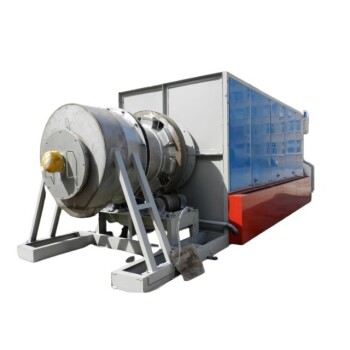
Electric Rotary Kiln Small Rotary Furnace for Activated Carbon Regeneration
Electric Activated Carbon Regeneration Furnace by KINTEK: High-efficiency, automated rotary kiln for sustainable carbon recovery. Minimize waste, maximize savings. Get a quote!

Electric Rotary Kiln Small Rotary Furnace Biomass Pyrolysis Plant Rotating Furnace
KINTEK's Rotary Biomass Pyrolysis Furnace converts biomass to biochar, bio-oil, and syngas efficiently. Customizable for research or production. Get your solution now!
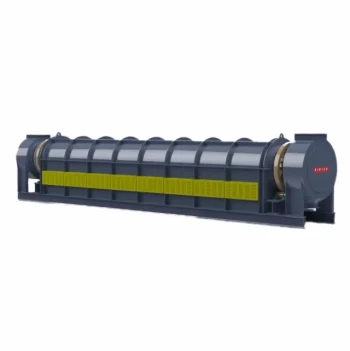
Electric Rotary Kiln Pyrolysis Furnace Plant Machine Small Rotary Kiln Calciner
KINTEK Electric Rotary Kiln: Precise 1100℃ calcination, pyrolysis & drying. Eco-friendly, multi-zone heating, customizable for lab & industrial needs.

Split Multi Heating Zone Rotary Tube Furnace Rotating Tube Furnace
Precision Split Multi Heating Zone Rotary Tube Furnace for high-temperature material processing, featuring adjustable tilt, 360° rotation, and customizable heating zones. Ideal for labs.
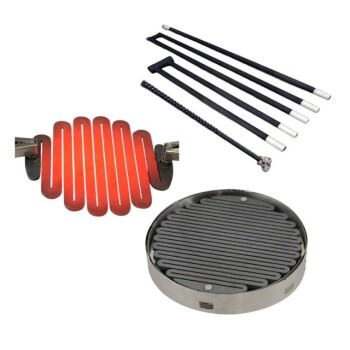
Silicon Carbide SiC Thermal Heating Elements for Electric Furnace
High-performance SiC heating elements for labs, offering 600-1600°C precision, energy efficiency, and long lifespan. Customizable solutions available.

CF KF Flange Vacuum Electrode Feedthrough Lead Sealing Assembly for Vacuum Systems
Reliable CF/KF flange vacuum electrode feedthrough for high-performance vacuum systems. Ensures superior sealing, conductivity & durability. Customizable options available.

Vacuum Hot Press Furnace Machine Heated Vacuum Press Tube Furnace
Discover KINTEK's advanced Vacuum Tube Hot Press Furnace for precise high-temperature sintering, hot pressing, and material bonding. Customizable solutions for labs.
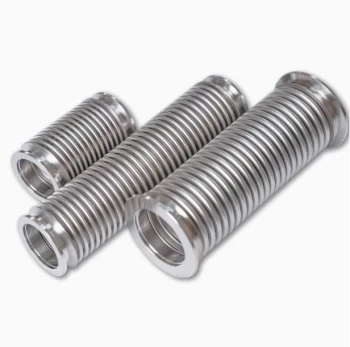
High Performance Vacuum Bellows for Efficient Connection and Stable Vacuum in Systems
KF ultra-high vacuum observation window with high borosilicate glass for clear viewing in demanding 10^-9 Torr environments. Durable 304 stainless steel flange.

High Pressure Laboratory Vacuum Tube Furnace Quartz Tubular Furnace
KINTEK High Pressure Tube Furnace: Precision heating up to 1100°C with 15Mpa pressure control. Ideal for sintering, crystal growth, and lab research. Customizable solutions available.

Laboratory Quartz Tube Furnace RTP Heating Tubular Furnace
KINTEK's RTP Rapid Heating Tube Furnace delivers precise temperature control, rapid heating up to 100°C/sec, and versatile atmosphere options for advanced lab applications.

Custom Made Versatile CVD Tube Furnace Chemical Vapor Deposition CVD Equipment Machine
KINTEK's CVD Tube Furnace offers precision temperature control up to 1600°C, ideal for thin film deposition. Customizable for research and industrial needs.

Multi Heating Zones CVD Tube Furnace Machine for Chemical Vapor Deposition Equipment
KINTEK's Multi-Zone CVD Tube Furnaces offer precision temperature control for advanced thin film deposition. Ideal for research and production, customizable for your lab needs.

Split Chamber CVD Tube Furnace with Vacuum Station CVD Machine
Split Chamber CVD Tube Furnace with Vacuum Station - High precision 1200°C lab furnace for advanced materials research. Customizable solutions available.

Vacuum Induction Melting Furnace and Arc Melting Furnace
Explore KINTEK's Vacuum Induction Melting Furnace for high-purity metal processing up to 2000℃. Customizable solutions for aerospace, alloys, and more. Contact us today!

MPCVD Machine System Reactor Bell-jar Resonator for Lab and Diamond Growth
KINTEK MPCVD Systems: Precision diamond growth machines for high-purity lab-grown diamonds. Reliable, efficient, and customizable for research and industry.

1200℃ Split Tube Furnace Laboratory Quartz Tube Furnace with Quartz Tube
Discover KINTEK's 1200℃ Split Tube Furnace with quartz tube for precise high-temperature lab applications. Customizable, durable, and efficient. Get yours now!
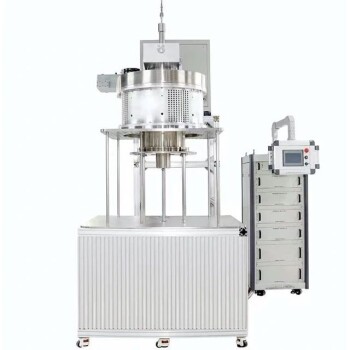
915MHz MPCVD Diamond Machine Microwave Plasma Chemical Vapor Deposition System Reactor
KINTEK MPCVD Diamond Machine: High-quality diamond synthesis with advanced MPCVD technology. Faster growth, superior purity, customizable options. Boost production now!

Molybdenum Vacuum Heat Treat Furnace
High-performance molybdenum vacuum furnace for precise 1400°C heat treatment. Ideal for sintering, brazing, and crystal growth. Durable, efficient, and customizable.

Mesh Belt Controlled Atmosphere Furnace Inert Nitrogen Atmosphere Furnace
KINTEK Mesh Belt Furnace: High-performance controlled atmosphere furnace for sintering, hardening & heat treatment. Customizable, energy-efficient, precise temperature control. Get a quote now!